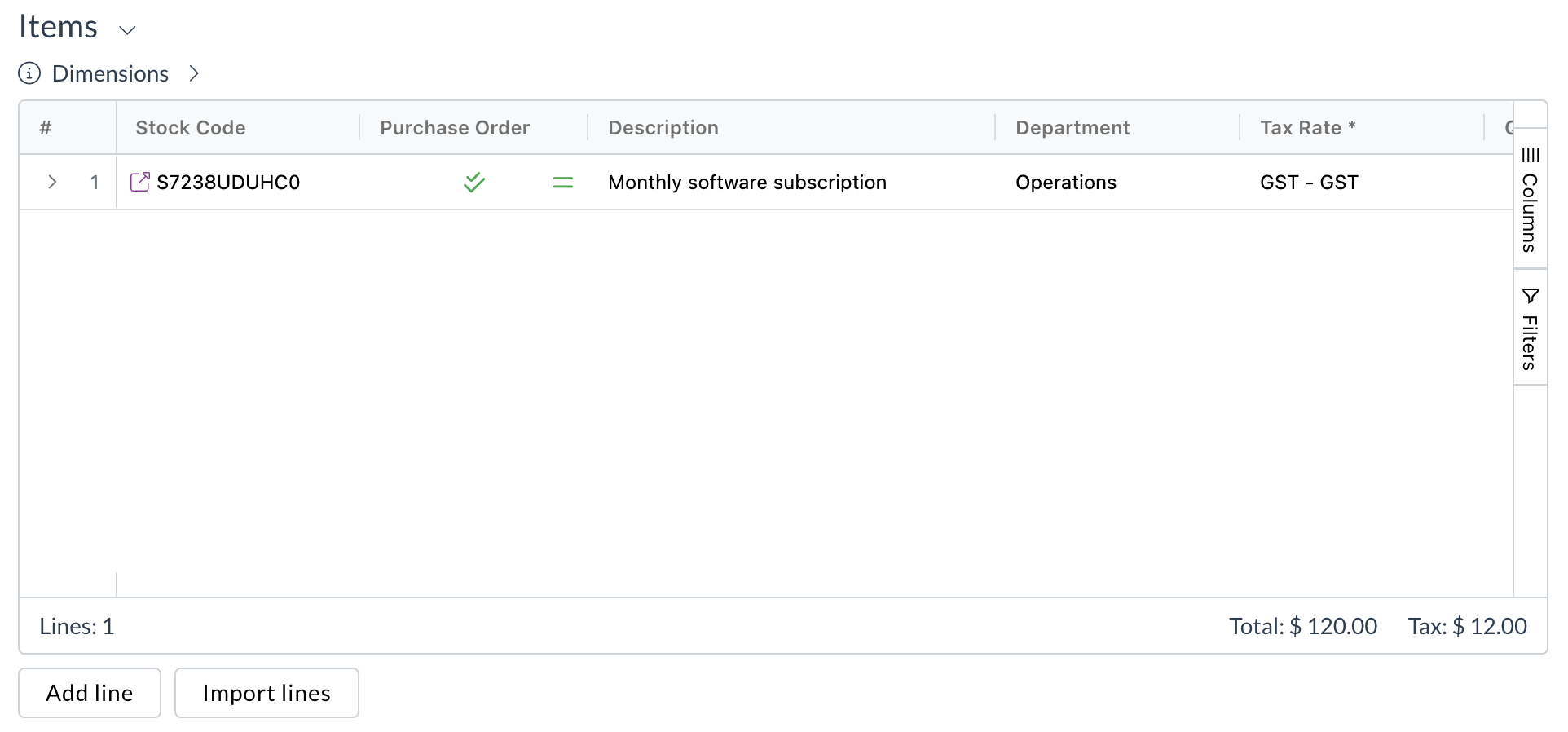Understanding two-way and three-way matching
We know that managing your purchasing process efficiently and accurately is crucial to your business. Matching is a verification process that helps you ensure you're only paying for what you ordered and received.
This guide explains the differences between two-way and three-way matching and why your organisation might use either approach.
What is matching?
Matching is a verification process that compares documents in your procurement workflow to ensure accuracy and prevent errors or fraud. By automatically linking related documents, matching helps:
- Prevent duplicate payments
- Ensure you only pay for items you ordered
- Verify you've received what you're paying for
- Detect pricing discrepancies early
Benefits of automated matching
Implementing automated matching in your procurement process delivers several key advantages:
- Time savings, by eliminating manual document comparison
- Error reduction, by catching discrepancies humans might miss
- Fraud prevention, by making it difficult for unauthorised purchases to be paid
- Better supplier relationships, by ensuring accurate, timely payments
Two-way matching
Two-way matching compares invoices against corresponding purchase orders to verify:
- The supplier is billing you for items you actually ordered
- Quantities match what was ordered
- Prices match what was agreed upon

This approach is often used for service-based purchases where there's no physical goods receipt, or when you want a streamlined verification process.
To learn more about the two-way matching process, see Two-way matching.
Three-way matching
Three-way matching extends verification by comparing invoices against both purchase orders and goods receipts to ensure:
- The supplier is billing you for items you actually ordered
- Quantities match what was ordered
- Quantities match what was physically received
- Prices match what was agreed upon

This provides the most comprehensive verification and is ideal for physical goods where receipt confirmation is important.
To learn more about the three-way matching process, see Three-way matching.
Quantity-based matching vs amount-based matching
When implementing matching in your procurement workflow, you can choose between two matching methods: quantity-based matching and amount-based matching.
Quantity-based matching compares specific quantities across documents. This approach ensures the exact number of units are reflected in purchase orders, goods receipts (for three-way matching), and invoices. For example, when ordering 100 components at $5 each, quantity-based matching verifies you received and are being billed for the correct number of components.
Quantity-based matching is best suited for:
- Inventory and stock items
- Any purchases where tracking precise quantities is important
Amount-based matching focuses on comparing the monetary values across documents. This approach "draws down" on the approved amount until the purchase order is exhausted. For example, when ordering consulting services for $5,000, amount-based matching ensures the total invoiced amount doesn't exceed the approved purchase order value.
Amount-based matching is best suited for:
- Professional services
- Recurring subscriptions
- Maintenance contracts
- Any purchases where the total cost matters more than specific unit quantities
Your organisation can implement different matching methods for different types of purchases, using the approach that provides the most appropriate controls for each category.
Bidirectional matching
Matching is bidirectional, meaning when an invoice is matched to a purchase order, the purchase order is also matched to the invoice. This applies for all matching, regardless of document type.
When to use each approach
Two-way matching works best for:
- Service-based purchases
- Situations where goods receipts aren't applicable
Three-way matching works best for:
- Physical goods purchases
- High-value transactions
- Purchases where quantity verification is critical
Many organisations use a combination of both approaches, applying the appropriate matching method based on the type of purchase.